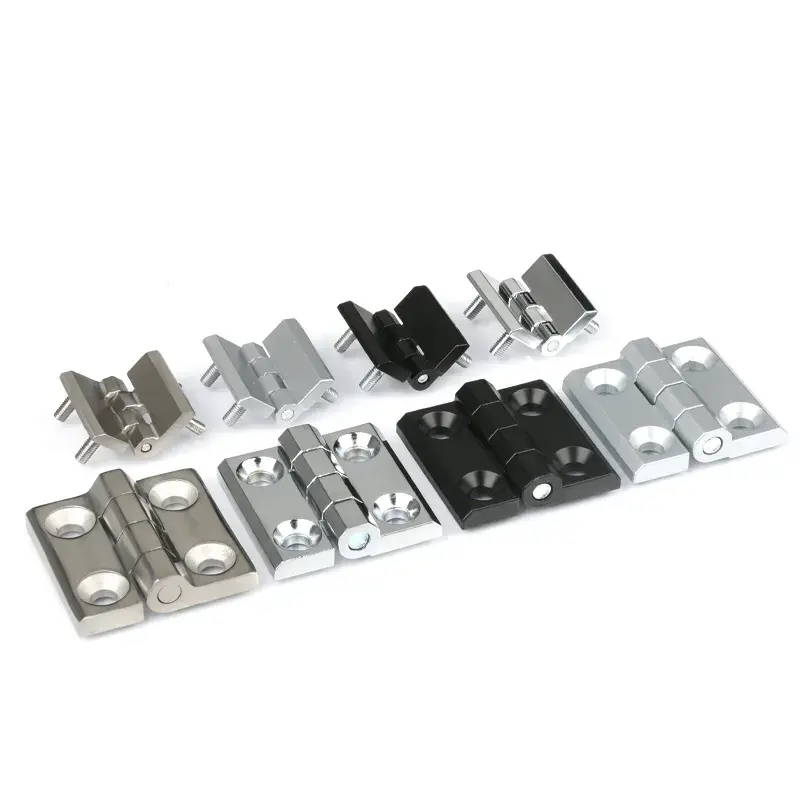Hardware Hinges: Small Components, Big Impact in Function and Design
2025-06-03
When it comes to construction, cabinetry, or furniture design, some components may go unnoticed—but they play a crucial role in both function and aesthetics. One such essential element is the hardware hinge. Though often hidden from plain sight, hinges provide the pivotal motion that allows doors, lids, and panels to open and close smoothly.

What Is a Hardware Hinge?
A hardware hinge is a mechanical bearing that connects two solid objects—typically a door and its frame—allowing a limited angle of rotation between them. Hinges come in various styles, materials, and load capacities to meet different structural and design requirements.
Whether it’s for a kitchen cabinet, a front door, or an industrial gate, hinges are the unsung heroes that ensure everything swings into action—literally.
Common Types of Hardware Hinges
Understanding different types of hinges helps you select the right one for your application:
Butt Hinges: Traditional style for doors and cabinets; typically mortised into the wood.
Concealed (Euro) Hinges: Popular in modern cabinetry for a clean, hidden look.
Piano Hinges (Continuous Hinges): Run the full length of the door, offering uniform support—ideal for toolboxes or long panels.
Pivot Hinges: Mounted at the top and bottom of the door rather than the sides; often used in frameless or heavy doors.
Spring Hinges: Return the door to its closed position automatically—perfect for fire-rated doors or self-closing needs.
Key Materials Used in Hardware Hinges
Choosing the right material ensures long-term durability and resistance to environmental factors:
Stainless Steel: Corrosion-resistant and ideal for outdoor or humid environments.
Brass: Offers a classic look and is resistant to tarnishing—commonly used in decorative applications.
Zinc Alloy: Cost-effective and corrosion-resistant, suitable for light-duty use.
Steel with Plating (e.g., Nickel or Chrome): Strong and stylish, often used in furniture and cabinetry.
Why Hardware Hinges Matter
Structural Support: Hinges bear the weight of the moving part, maintaining alignment and balance.
Smooth Functionality: A high-quality hinge provides a smooth, silent swing with minimal resistance.
Aesthetic Appeal: From vintage to modern, the right hinge enhances the overall design of furniture or doors.
Safety and Security: Specialized hinges like security or lift-off hinges are critical for safety in doors and enclosures.
Applications of Hardware Hinges
Hardware hinges are used across a wide range of residential, commercial, and industrial settings:
Home Furniture: Kitchen cabinets, wardrobes, folding tables.
Commercial Buildings: Fire doors, glass doors, restroom stalls.
Industrial Equipment: Enclosures, panels, storage units.
Architectural Uses: Entry doors, heavy gates, pivoting partitions.
Tips for Choosing the Right Hinge
1. Check Load Requirements – Ensure the hinge can support the weight of the door or lid.
2. Consider Frequency of Use – Choose heavy-duty hinges for high-traffic areas.
3. Match with Design – Pick finishes and styles that complement the surrounding hardware and aesthetics.
4. Look for Quality – Precision manufacturing and rust resistance are essential for long-lasting performance.
Conclusion
Though they may be small, hardware hinges are essential components that influence the functionality, safety, and style of almost every door, panel, and piece of furniture in our daily lives. From kitchen cabinets to industrial machinery, the right hinge ensures everything operates smoothly and reliably.


